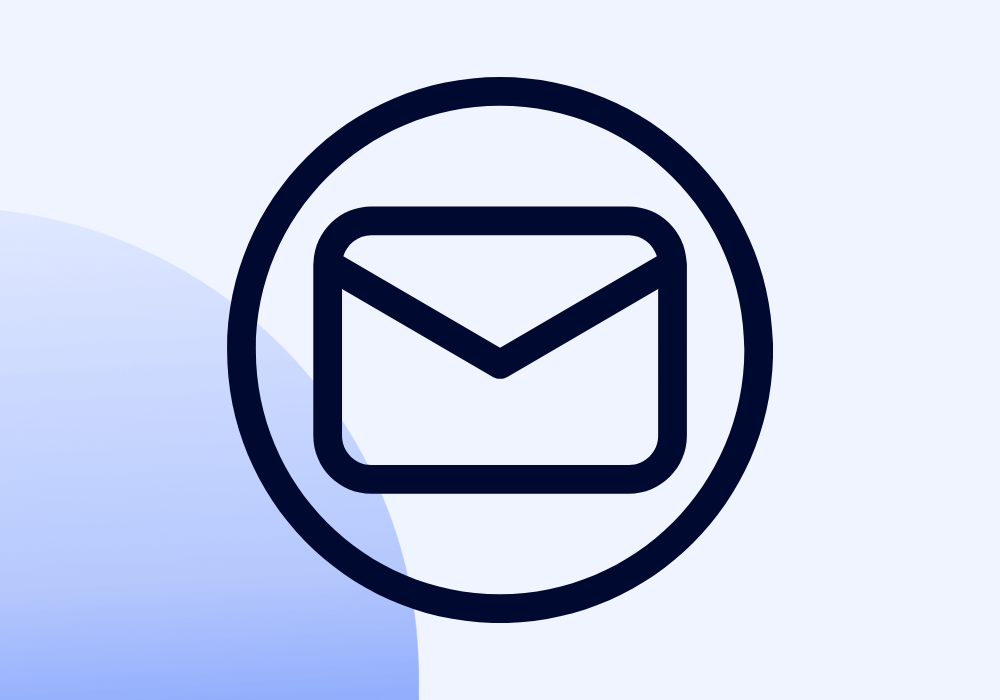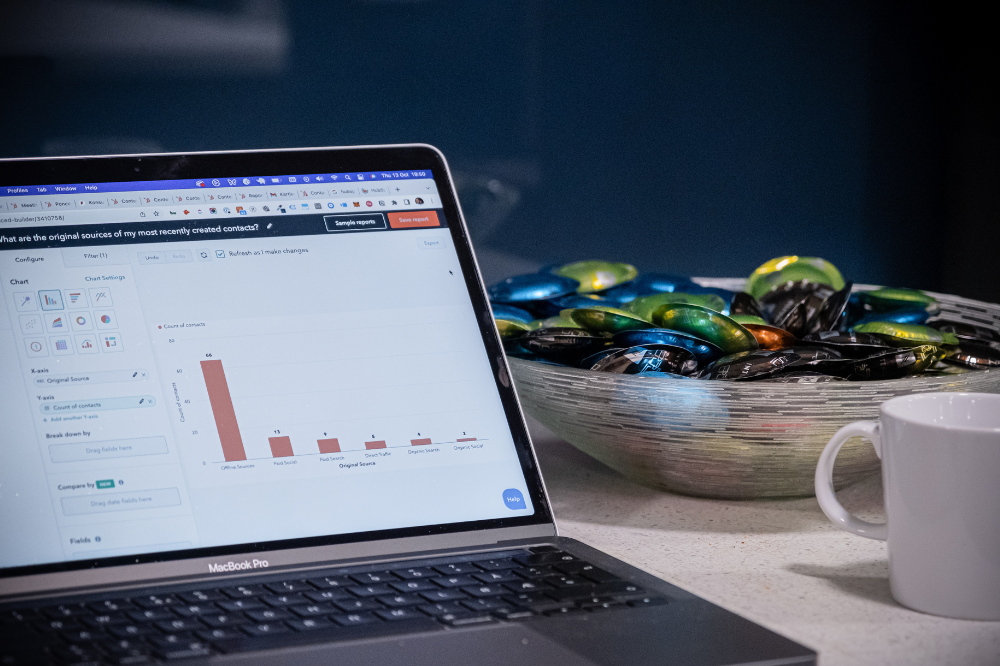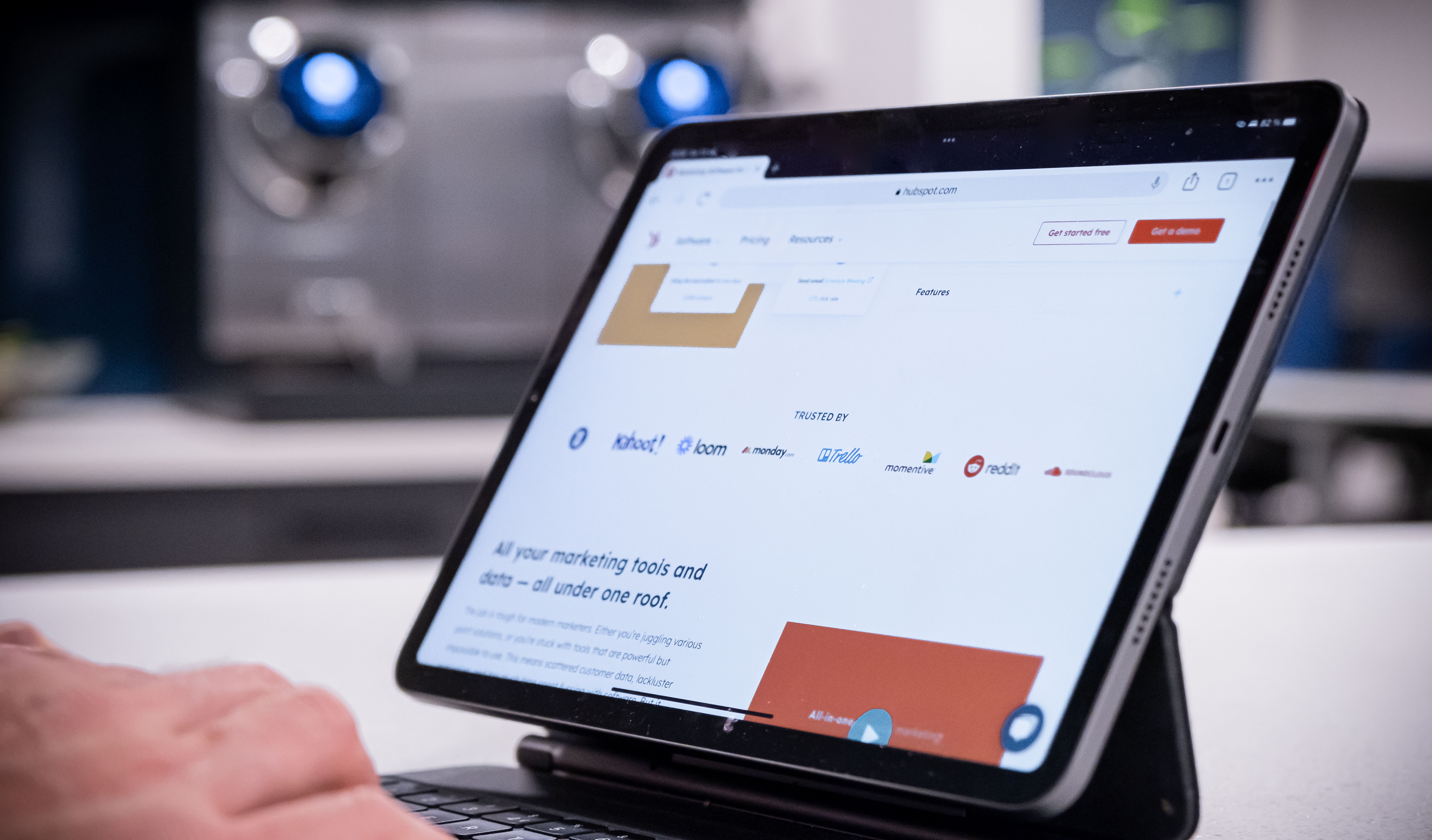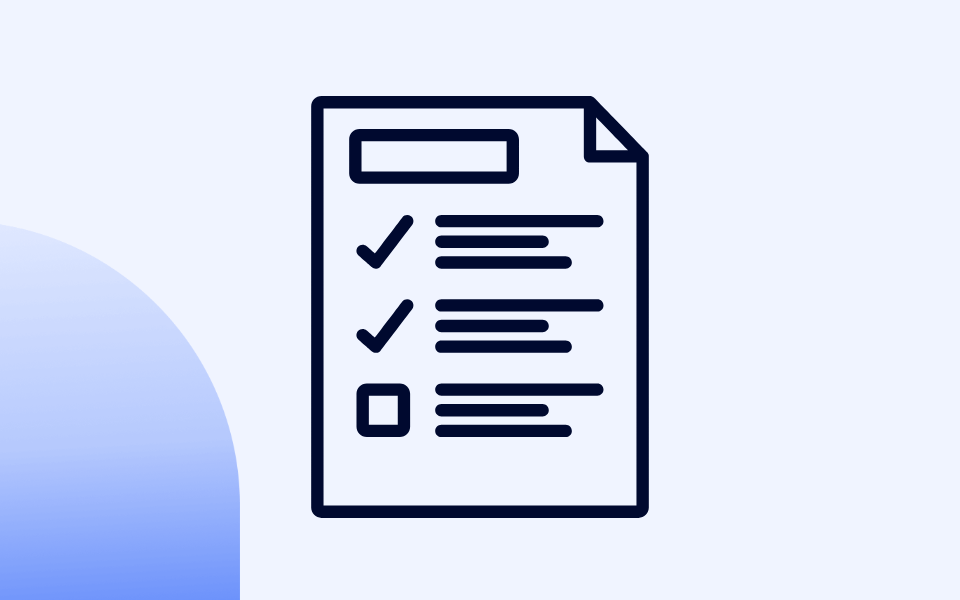How to Build a Winning Buyer-Centric B2B Growth Strategy
Create a Newsletter in HubSpot That Stands Out: A Complete Guide for B2B Marketers

Today, we’ll show you how to create a standout HubSpot newsletter that your audience will be eager to open. This approach helps top brands build trust, boost engagement, and get more clicks.
By the end of this guide, you’ll know exactly how to design a professional, engaging newsletter using HubSpot’s powerful tools—step by step.
A Find a New Way Media report reviewed over 100 newsletters to understand what characterizes the best newsletters. We will cover these findings in this article.
Whether you’re starting from scratch or refining your strategy, we’ve got you covered. Let’s dive in and build a newsletter that delivers real value to your audience.
- Why Newsletters Matter for Your Business
- How to Set Up Your Newsletter in HubSpot
- What Makes an Exceptional Newsletter
- Creating an Optimal Signup Process
- Increasing Conversions with the Signup Form
- Using Double Opt-In for Contact Verification
- Sending a Welcome Email
- Stick to a Specific Format
- How Often Should You Send Your Newsletter?
- Choosing the Right Sender for Your Newsletter
- Keep Your Newsletter Short and Sweet
- Creating Short and Unique Subject Lines
- Using Simple Design and Language
- Steal Amazon’s Newsletter Template
- Building a Loyal Audience
Ready to create a newsletter that shines? Let’s dive in and show you how to craft a HubSpot newsletter that grabs attention and gets results.
Why Newsletters Matter for Your Business
Have you ever felt like your newsletter isn’t delivering the desired results?
Maybe you’re sending it out because you feel like you should—after all, everyone has one, right? But there’s more to it than just ticking a box.
Think about how you attract and engage customers.
You’re likely using a mix of paid channels like Google Ads, Facebook Ads, or LinkedIn Ads. You might also rely on earned channels, like PR, media coverage, or guest posts.
But what about your owned channels—your website, CRM, and especially, your newsletter?
Your newsletter is one of the most valuable owned channels because you fully control it. Unlike social media platforms that can change algorithms on a whim, your email list is yours.
You decide how it looks, what it says, and when it reaches your audience. This gives you an incredible opportunity to build trust and communicate directly with your subscribers in a way that other channels can’t.
How to Set Up Your Newsletter in HubSpot
Ready to create a newsletter in HubSpot? Creating an email newsletter in HubSpot is straightforward.
Here’s how you can do it step-by-step:
Step 1: Activate GDPR Features
It’s essential to ensure that your newsletter complies with GDPR and that you collect consent from subscribers. Don’t worry—it’s easy.
Go to Settings > Privacy and Consent in HubSpot, and check the box to Enable GDPR privacy settings. This allows you to be transparent about how you’ll use your subscribers' information, which builds trust from the start.
You’ll see a message like this on your form, letting subscribers know how their data will be used.
Step 2: Add SPF, DKIM, and DMARC verification
Set up SPF, DKIM, and DMARC in HubSpot to keep your marketing emails from spam folders. These protocols are essential for boosting deliverability and protecting your domain from phishing attacks.
As phishing attempts rise, properly configuring these technologies ensures your emails are authenticated and reach your audience while safeguarding your brand’s reputation.
Step 3: Create a Newsletter Signup Form
Now that your GDPR settings are in place, it’s time to create the signup form so visitors can subscribe to your newsletter. You’ll do this by navigating to Marketing > Lead Capture > Forms in HubSpot.
To maximize your form, you should be strategic about when and where it appears on your site.
A good rule of thumb is to display the form only after someone has shown some interest—like when they’ve scrolled halfway down the page or spent 7 to 20 seconds on it.
This way, you’re targeting the right people, which leads to higher conversions.
Here’s how you can set up the triggers for your form to ensure it reaches engaged visitors.
Step 4: Create a List of Newsletter Recipients
Once your signup form is ready, you'll need to build a list of people who will receive your newsletter. In HubSpot, you’ll do this by creating an active list.
What’s excellent about active lists is that they update automatically. HubSpot will add or remove contacts from your list based on whether they meet your set criteria.
The main criterion for this list will be that they’ve filled out the signup form you just created. HubSpot will handle the rest, ensuring your list is always up-to-date with the right people.
Step 5: Customize Your Newsletter to Match Your Branding
Now comes the fun part—designing your HubSpot newsletter! Go to Marketing > Email in HubSpot and choose Regular to create a newsletter you’ll send manually to your contacts.
From there, select the Drag and Drop option. This is where HubSpot’s editing tool shines. You can easily add your company’s logo, brand colors, and other elements representing your business.
Whether you want a sleek and professional look or something more fun, the drag-and-drop tool lets you design your newsletter without needing any coding skills.
This step ensures that your newsletter doesn’t just sound like you—it looks like your brand, too.
Step 6: Select Your Recipients and Send the Newsletter
You're almost there! With your design in place, it's time to choose who will receive your newsletter. Go ahead and select the list we created back in Step 3.
HubSpot will pull in all the subscribers who match your criteria, ensuring you’re reaching the right audience.
Once your recipients are selected, review your newsletter one last time to ensure everything looks good—then hit Send! HubSpot will take care of the rest, delivering your beautifully designed newsletter to subscribers' inboxes.
And just like that, you're all set to start engaging your audience with your first newsletter!
What Makes an Exceptional Newsletter
Now that the technical setup is complete, let’s discuss what sets a fabulous newsletter apart.
It’s not just about sending emails—it’s about creating something your audience looks forward to. So, what can you do to make your newsletter exceptional?
Give It a Name (And Skip Calling It a “Newsletter”)
The word "newsletter" has become stale. We’re all flooded with them, and most of them don’t stand out. That’s why your first step should be to give your newsletter a unique name.
Think of it as a mini-publication that positions you as the go-to source for your industry.
Take it further by giving your newsletter its logo and even a dedicated landing page. You’re not just sending an email; you’re creating a resource your audience can’t wait to open.
Let's say you're making a newsletter for a maritime tech blog. Some newsletter names include:
- The Digital Dock
- The Shipyard Report
- Marine Insights
- Fleet Intelligence
- Port Data Digest
- Blue Tech Future
- Smart Seas
Creating an Optimal Signup Process
Your signup process might seem straightforward, but getting it just right can make a big difference in how many people subscribe. So, how do you make sure your form grabs attention?
First, make it easy to find. You want visitors to your website or blog to see the form without having to hunt for it. There’s no one-size-fits-all solution, but here are a few spots that typically work well:
- Right at the top of your blog
- As a pop-up after they’ve been on your page for a few seconds
- In the middle of an article when they’re already engaged with your content
- Using lead generation ads on platforms like Facebook and LinkedIn
The key is to show the form when someone is already showing interest in what you have to offer. That way, they’re more likely to sign up—and your conversion rates will be higher.
Increasing Conversions with the Signup Form
Your newsletter’s main purpose isn’t to push sales—it’s to give your audience valuable content regularly. So, how can you make it as easy as possible for them to sign up?
Keep it simple. The fewer fields you have, the better. Stick to just asking for an email, or maybe their first name and email if you want to add a personal touch later. This makes the process quick and painless, which leads to higher conversions.
If you’re targeting different groups, you can ask for a bit more info, like their role or company size. This will allow you to segment your newsletter and send more personalized content. But remember, less is more—don’t overwhelm them with too many questions.
Using Double Opt-In for Contact Verification
You want to ensure that the people signing up for your newsletter are genuinely interested, and that’s where double opt-in comes in.
This extra step helps you verify that each contact is valid, so you’re only sending your newsletter to people who truly want to receive it.
Once someone fills out the signup form, they’ll get an email asking them to confirm their subscription.
This not only ensures that their email is correct but also gives you peace of mind that your list is clean and engaged.
To make this process feel seamless, customize the confirmation email to reflect your brand’s personality. Whether you’re using HubSpot, Mailchimp, or another email service provider, adding your company’s logo, colors, and tone will create a unified experience for your subscribers from the start.
Sending a Welcome Email
Don’t underestimate the power of a well-timed welcome email. Right after someone subscribes, they’re most engaged and curious about what you have to offer—so it’s the perfect moment to make a great first impression.
While the double opt-in confirms their interest, the welcome email takes that relationship a step further. It’s your chance to introduce yourself, share helpful resources, and set the tone for what subscribers can expect from you moving forward.
Whether you include links to valuable content, a discount code, or even a short video, this email can kick off the relationship in a positive, meaningful way.
Setting up an automated welcome email in HubSpot only takes a few minutes. This will save you time while strengthening your connection with your audience.
Stick to a Specific Format
One key to keeping your newsletter successful is sticking to a consistent format. Your subscribers will come to expect a certain structure, and this reliability helps build trust. There are several formats you can choose from, depending on what suits your business and audience best:
1. The Latest Blog Posts
This one’s simple and automated. HubSpot can pull titles, images, and introductions from your new blog posts and send them out automatically. It’s great if your goal is to share fresh content regularly with minimal effort.
2. Sales-Driven
Some newsletters focus heavily on pushing products or services. Be careful with this approach, though. If every email is a hard sell, your audience may lose interest quickly. It’s best to balance sales with valuable content to keep your subscribers engaged.
3. The Summary
This format includes a round-up of articles, YouTube videos, or social media posts that are relevant to your audience. It doesn’t have to be all your content—curating useful links from around the web shows that you’re a valuable resource in your industry.
4. Newsletter as a Homepage
If you produce a lot of text-based content, you can send the full content in the newsletter. This way, subscribers can read everything without having to click through to your site. It’s a seamless reading experience that some audiences prefer.
Pick a format that fits your audience and stick with it. Consistency helps build a familiar, reliable experience for your subscribers.
How Often Should You Send Your Newsletter?
How often should you hit "send" on your newsletter? It’s a common question, and the answer depends on what works best for you and your audience.
For most businesses, sending a newsletter once a week is a good starting point. It keeps your subscribers engaged without overwhelming them.
But here’s the thing—you don’t want to overdo it. Sending too many newsletters, especially if you don’t have a steady stream of valuable content, can lead to unsubscribes.
On the flip side, if you wait too long between emails, your audience might forget about you.
A good rule of thumb is to start with once a week and adjust as you learn what resonates with your subscribers.
If you find that they’re really engaged and you have a lot to share, you can increase the frequency. Just keep it balanced and make sure every email delivers value.
Choosing the Right Sender for Your Newsletter
When it comes to sending newsletters, the “from” name can be just as important as the content inside. Your subscribers need to recognize and trust who the email is coming from—otherwise, it might end up in the trash before it’s even opened.
So, who should be the sender? Here are a few options to consider:
- Your Company Name: Using your company name as the sender can add a layer of professionalism. It’s a straightforward choice, but it might feel a bit impersonal.
- An Individual: Sending from a person’s name (like your CEO or head of marketing) can make the email feel more personal and relatable. It helps build a connection with your audience.
- A Combination: You can combine a person’s name with your company’s, like "Sarah from Nettly." This strikes a nice balance between personal and professional, giving your email both warmth and brand recognition.
Whichever option you choose, make sure to stick with it. Consistency is key—changing the sender frequently can confuse your audience and cause them to lose trust.
Keep Your Newsletter Short and Sweet
How long should your newsletter be? It might seem like packing in more information will keep your readers engaged, but that’s often not the case. In fact, the best-performing newsletters tend to keep things short—around 250 words or less.
Think about it: your subscribers are busy.
If they open your email and see a wall of text, they might just close it and move on. By keeping your newsletter concise, you’re making it easier for them to digest the content and take action. Focus on one or two key messages per email, and don’t be afraid to leave them wanting more.
So, aim for clarity and brevity. Get straight to the point, and your readers will thank you for it!
Forget Meaningless Personalization
You’ve probably seen newsletters that throw in your first name in the subject line or greeting. It’s a common feature in email marketing, but here’s the thing—people can see right through it. Personalization for the sake of it doesn’t add much value.
Instead, focus on meaningful personalization. This means segmenting your audience based on their role, industry, or interests, and sending them content that’s genuinely relevant to them.
For example, you could create different versions of your newsletter for CEOs versus marketers, making sure each group gets information tailored to their needs.
If you’re not going to personalize in a way that adds real value, it’s better to keep things simple. Collect only the data you plan to use and focus on delivering great content that resonates with your audience.
Using Emojis, GIFs, and Videos to Stand Out
In a crowded inbox, it’s all about catching your reader’s eye. One simple way to do that? Emojis, GIFs, and videos. When used right, these elements can add personality to your emails and make them more engaging.
Emojis can be especially effective in your subject lines, helping your newsletter pop in a sea of text. Just make sure the emojis fit your brand and the message you’re sending. A well-placed emoji can grab attention, but overdoing it might make your email feel unprofessional.
Videos and GIFs are also great tools to break up text and keep your readers interested. Whether it’s a short explainer video or a fun GIF, these visuals can help convey your message more effectively. Just be mindful of load times—too many large files can slow things down.
By thoughtfully incorporating these elements, you can make your newsletters more dynamic and memorable.
Creating Short and Unique Subject Lines
Your subject line is your first (and sometimes only) chance to grab your reader's attention. If it’s boring or too generic, your email might end up in the trash before it’s even opened. So how do you stand out?
Keep it short and punchy. Ideally, your subject line should be five words or less. This gives it just enough space to spark curiosity without giving too much away.
Also, think about using unusual or emotional words to create intrigue. Instead of something like "Monthly Newsletter," try "Unlock the Secrets to Better Sales" or "Why Your Marketing Strategy is Failing." You want to make your reader stop and think, “I need to open this.”
Another trick is to ask a question or use a statement that challenges common beliefs. For example, a subject like “Are You Making This Marketing Mistake?” is far more engaging than a plain “Marketing Tips Inside.”
By being creative and keeping your subject lines short, you’ll increase the chances of your emails getting opened.
Using Simple Design and Language
When it comes to creating a great newsletter, simplicity is your best friend. A clean, easy-to-read design paired with clear language can make all the difference.
The most successful newsletters avoid overcomplicated layouts and skip the jargon—this helps readers focus on the message instead of getting lost in unnecessary details.
Design:
Stick to a simple, one-column layout. It makes your newsletter easier to read on any device, especially mobile. Keep your colors and fonts consistent with your brand, but avoid overwhelming your audience with too many visual elements.
Clear headings, short paragraphs, and plenty of white space can guide your readers through the content without making it feel cluttered.
Language:
Use straightforward language that speaks directly to your audience. Avoid technical terms unless absolutely necessary.
The key is to keep things conversational—just like we’re doing here. You want your readers to feel like they’re having a chat with a trusted friend, not decoding an instruction manual.
By keeping your design and language simple, you'll make your newsletters more inviting and easier to engage with.
Steal Amazon’s Newsletter Template
When it comes to effective newsletter design, Amazon has nailed it—and you can take inspiration from their approach. Their template is a masterclass in simplicity: a clean, one-column layout, with the logo prominently placed at the top and clear calls to action throughout.
In fact, Amazon once accidentally sent out an email with just their template—no content. Surprisingly, it still worked. That’s how powerful a good design can be.
The key is clarity. With a simple layout, your readers won’t get distracted, and they’ll know exactly where to click.
Here’s what you can take from Amazon’s template:
- Keep it simple: One column works best. It’s easy to read and looks great on mobile.
- Logo placement: Place your logo at the top so readers instantly know who the email is from.
- Clear calls to action: Make sure your main message or offer stands out, with easy-to-find buttons for readers to click.
If you want your newsletter to be as effective as Amazon’s, focus on these design basics. Sometimes, less really is more.
Building a Loyal Audience
Getting your readers to open and engage with your newsletter is one thing, but how do you keep them coming back? It all starts with consistency.
Remember the first point—give your newsletter a unique name and a clear concept that resonates with your target audience. From there, stick to what you promise. Whether it’s tips, industry insights, or useful resources, make sure your content is consistent and valuable.
Use the same format each time and send your newsletter on a regular schedule. This builds trust, as your readers will know what to expect from you.
But don’t rush—building a loyal audience takes time. It can take anywhere from 3 to 9 months before you start seeing real results, like more engagement or even meetings.
One key tip: avoid turning your newsletter into a sales pitch. If you push too hard on selling, you’ll risk losing your readers' trust. Instead, focus on delivering value, and over time, your readers will start seeing you as a reliable source.
Conclusion
You now have everything you need to create a HubSpot newsletter that stands out. By following these steps—choosing the right format, simplifying your design, and focusing on content that truly resonates with your audience—you’ll be well on your way to building a loyal, engaged subscriber base."
Remember, consistency is key. Stick to a regular schedule, keep your messaging clear and valuable, and always aim to provide something your readers look forward to. It might take time to see results, but with patience and persistence, your newsletter will start delivering real value to your business.
Ready to take your email marketing to the next level? Start implementing these strategies today, and watch as your newsletter becomes a powerful tool for building relationships and driving results.


